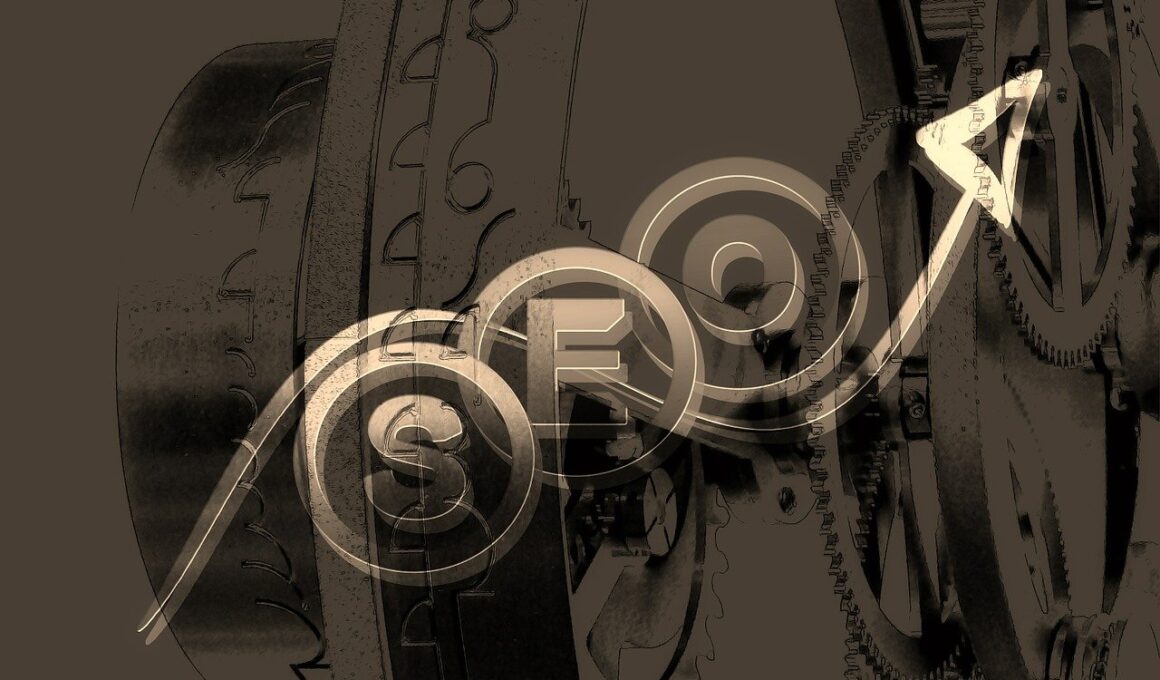How to Use Internal Linking to Boost SEO Through Content
Internal linking is a critical aspect of search engine optimization (SEO) that should not be overlooked when developing content. It involves connecting different pages within your website through hyperlinks, ultimately guiding both users and search engines towards relevant content. When executed correctly, internal linking enhances site navigation and helps search engines understand the structure of your website. This results in improved indexing and ranking for your web pages. The primary goal of internal linking is to distribute page authority across the site. Each internal link serves as a vote for the target page, reinforcing its significance. By directing users and bots to various sections, you can control which pages receive more visibility and authority. When creating internal links, aim for contextual relevance. Ensuring the linked text correlates with the content of the linked page enhances user experience. Additionally, internal linking can reduce bounce rates by encouraging users to explore more content, which can inadvertently improve SEO. Understanding how to effectively use internal links is essential for maximizing the visibility and ranking potential of your web pages. With the right strategy, internal linking can serve as an effective SEO tool.
The Importance of Anchor Text
One critical component of effective internal linking is the use of anchor text. Anchor text refers to the clickable text within a hyperlink. The choice of words in your anchor text can significantly impact how search engines understand the linked content and its relevance. When crafting anchor text, ensure it is descriptive and provides a clear indication of the linked page’s subject matter. This practice not only assists search engines in interpreting the context but also enhances user experience. Users are more likely to click on links that are relevant and reflect the content they expect to find. For example, if a link leads to a page about link-building strategies, the anchor text should ideally contain terms like ‘link building’ to accurately represent what users will learn. Additionally, avoid using generic phrases like ‘click here’ as such terms do not convey informative context. Striking a balance between keyword optimization and user experience is vital when selecting anchor text. Effective anchor text can contribute positively to your SEO efforts while also guiding users toward valuable content on your website.
Incorporating internal links within your content requires strategic placement to be most effective. This means considering the user journey and where users might find it helpful to access related information. Rather than haphazardly inserting links throughout the text, it’s essential to assess the flow of content and determine logical points where links can enhance comprehension or engagement. Including links in areas where users often seek additional context, such as after presenting an important fact or after concluding a thought, leads to better engagement. In this approach, ensure that the linked content genuinely provides more information or details that are relevant to the segment of text they follow. Moreover, effective linking should not overwhelm users; a few well-placed links in a paragraph are preferable to excessive amounts throughout the entire document. As a result, this simplification of navigation can significantly boost user satisfaction and, in turn, improve search rankings. Remember, the ultimate aim is to enrich the reader’s experience while also optimizing for SEO, making it essential to practice moderation when linking internally.
Tools to Analyze Internal Links
To effectively manage and optimize your internal linking strategy, utilizing specific tools can make a significant difference. Internal linking analysis tools can help identify the most linked-to pages on your site, the depth of link structures, and even gaps where relevant links might be missing. Tools like Google Search Console, Ahrefs, or SEMrush provide insights into how your internal links are performing. With these tools, you can monitor which pages receive the most traffic through internal links. This knowledge allows website owners to identify high-performing pages and leverage them to boost lesser-known ones. Regularly assessing your internal links can reveal areas for improvement. Search engines favor websites with strong internal linking strategies as it indicates organized and easy-to-navigate content. Additionally, internal linking can assist in spreading authority from high-ranking pages to those with lower visibility. By regularly auditing your website’s internal link structure, you can optimize both user experience and SEO efficiency. Streamlining your internal linking through these tools contributes to an effective content marketing strategy.
Internal links can also be categorized based on their type and function. Understanding these categories allows for a more strategic approach. The two primary categories are contextual links and navigational links. Contextual links are embedded within the content itself and aim to provide users with additional context and relevant information. Navigational links, on the other hand, are meant to help users move about the site’s structure easily. Developing a holistic internal linking strategy should combine both types. Contextual links provide depth and relevance while navigational links enhance usability and structure. Developing both types ensures that your audience not only accesses content easily but also discovers related topics that they may find beneficial. When writing new content, having a linking strategy that encompasses both types is essential for effective SEO performance. Thus, each piece of content you generate should help your audience see your site as a valuable resource for information regarding its subject. Taking the time to categorize your internal linking strategy can improve your content’s effectiveness and positioning.
Measuring the Success of Internal Linking
Tracking and measuring the success of your internal linking efforts is crucial to gauge effectiveness and optimize performance. Key performance indicators (KPIs) offer valuable insights into how well your internal links contribute to your SEO and user engagement strategies. Crucial metrics to monitor include organic traffic, which reveals how users are finding your content through search engines, and page views per session, which shows how users navigate through your site. High bounce rates on certain pages may indicate that internal linking is lacking or ineffective. By tracking these metrics over time, you can assess whether adjustments to your internal linking strategy are necessary. Additionally, consider analyzing user behavior through heatmaps, providing visual insight into where users click most frequently. This data can indicate which internal links are most effective and which ones may require repositioning or enhancement. Regular analysis of these KPIs allows you to refine your internal linking practices, ensuring they align with both user experience and SEO goals. Ultimately, tracking the success of internal links positions your content for better engagement and increased rankings.
In conclusion, the role of internal linking in boosting SEO is undeniable. This practice not only enhances user experience but also aids search engines in comprehending the structure and significance of your content. As you fine-tune your strategy, remember to focus on relevant anchor text, the ideal placement of links, and the categorization of links. Establishing a thorough internal linking plan invites users to explore your site while improving your SEO standing. Using tools to monitor performance and success will help you identify where adjustments are needed for optimal results. Balancing contextual and navigational links is essential in crafting a seamless user experience. Each piece of content designed should act as an entry point for the audience to discover further information. By implementing these strategies, you not only benefit your site’s overall SEO effectiveness but also create a more valuable resource for your audience. The ultimate goal is to elevate your website’s content quality through effective internal linking. By doing so, you can position your site favorably in search results, thus driving organic traffic and engagement.
Remember that the journey of mastering internal linking takes time and experience. Continuous testing and adaptation to changes in user behavior and search engine algorithms are necessary for lasting success. Engage in learning through analyzing your data and observing how your internal links perform over time. Ultimately, a proactive approach will ensure that your content remains relevant, relevant, and optimized for the best search engine outcomes. Following these practices consistently will place you on a path to achieving higher visibility and better user engagement. Internal linking should not feel like a burdensome task but rather a beneficial strategy that improves your website’s architecture. Embrace the potential of this powerful SEO marketing tool by integrating it into your overall content marketing strategy. Internal links can significantly contribute to lower bounce rates and enhanced overall site credibility when developed thoughtfully. With dedication, you can fully harness the power of internal linking in your content marketing for SEO strategy. As you grow your site’s visibility and authority, the potential results can be significantly rewarding as you observe the impact of your well-thought-out linking efforts.


